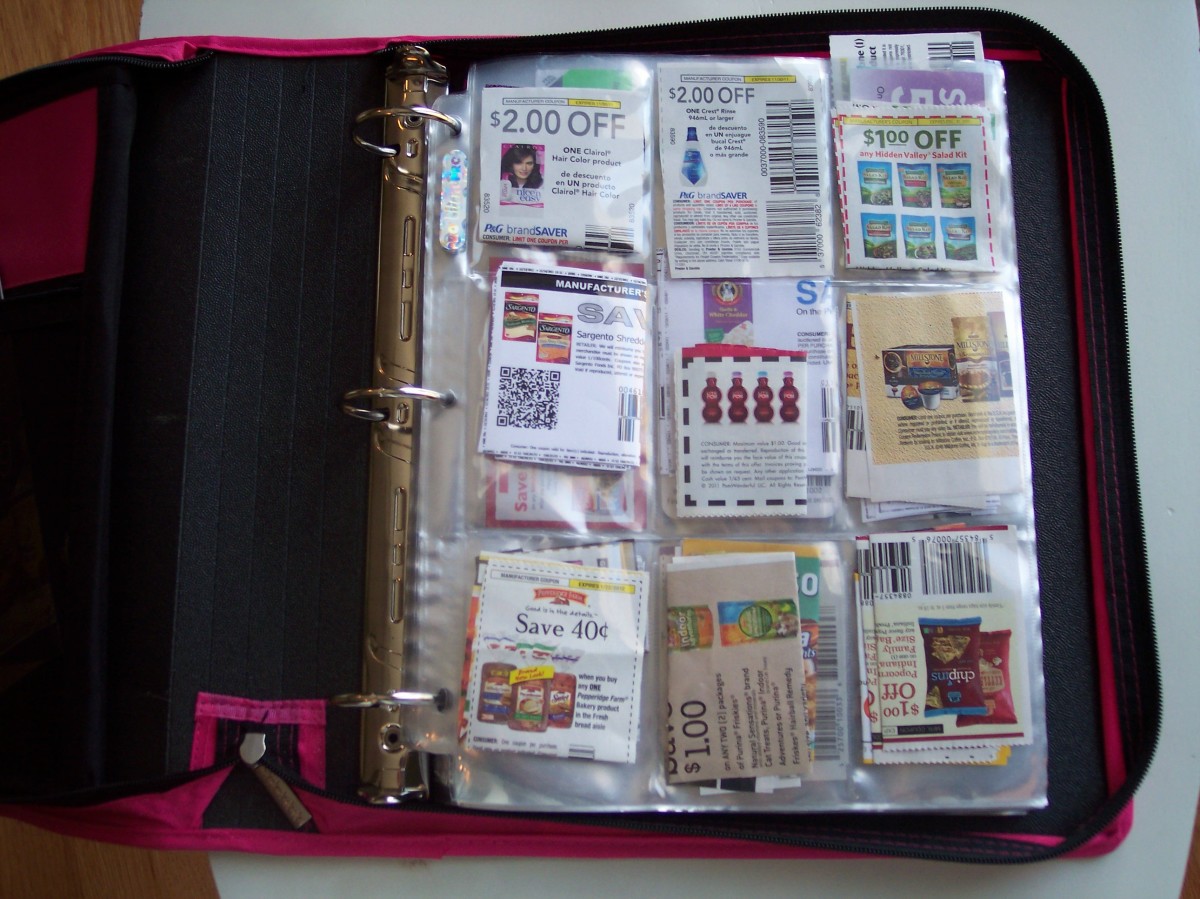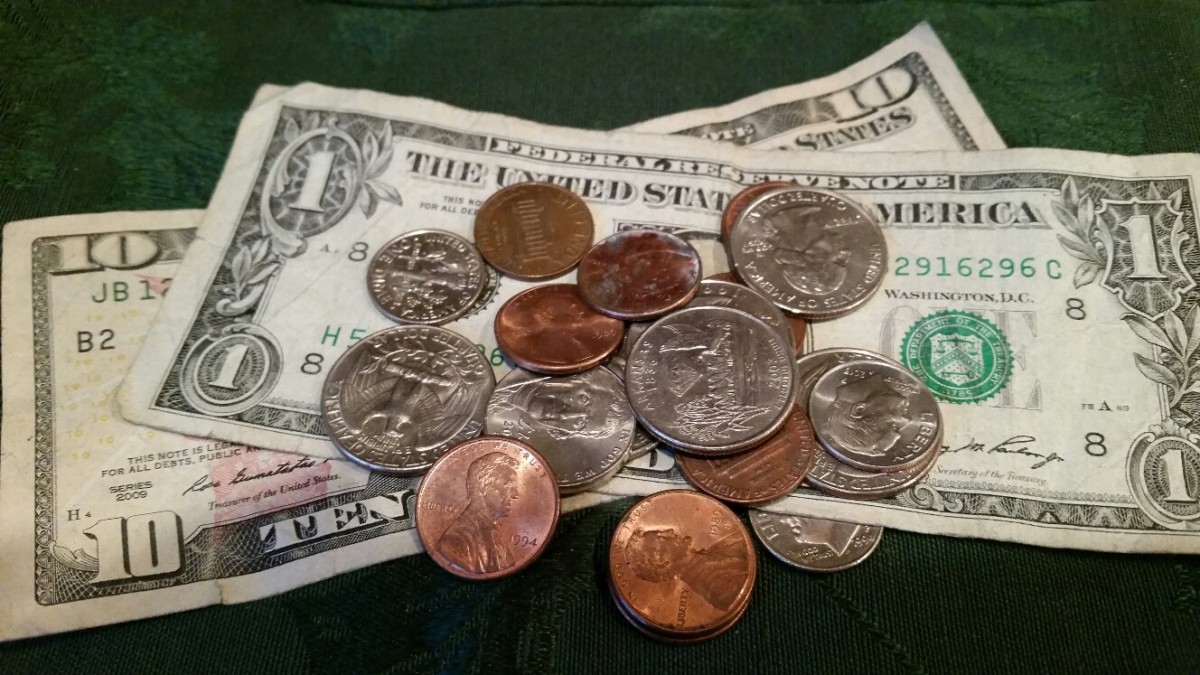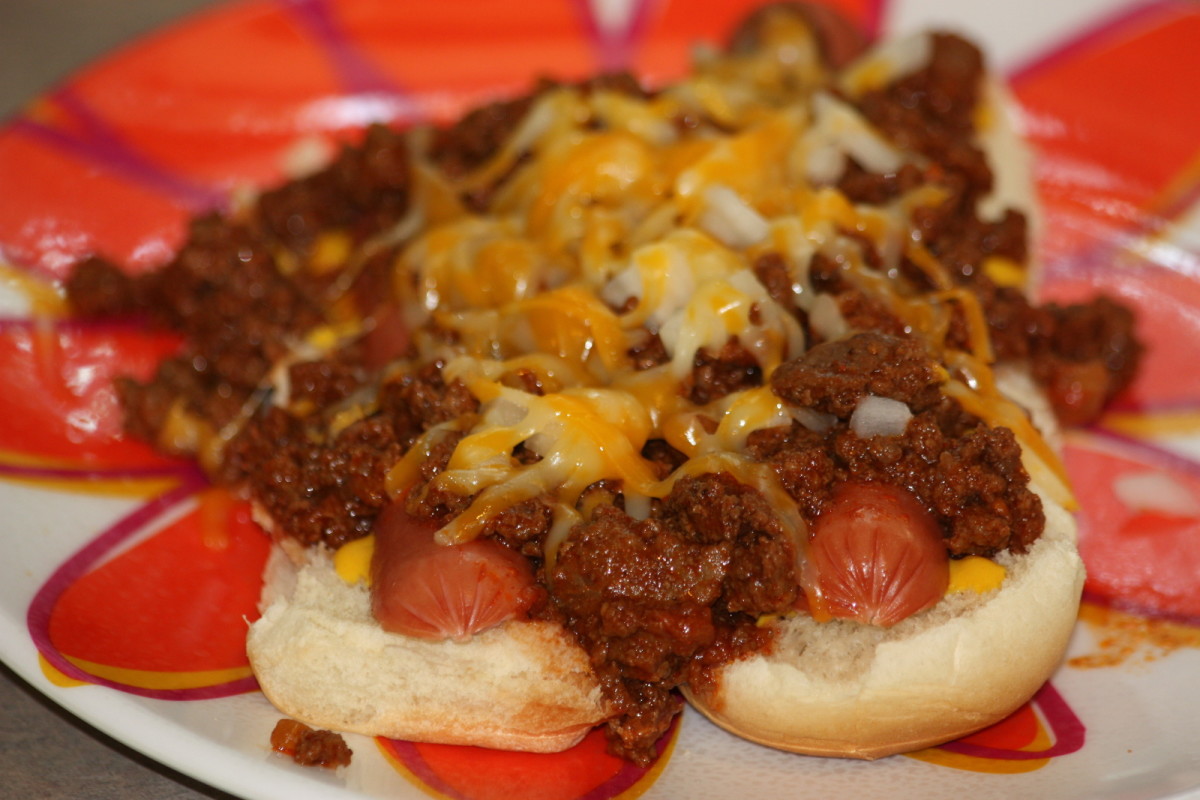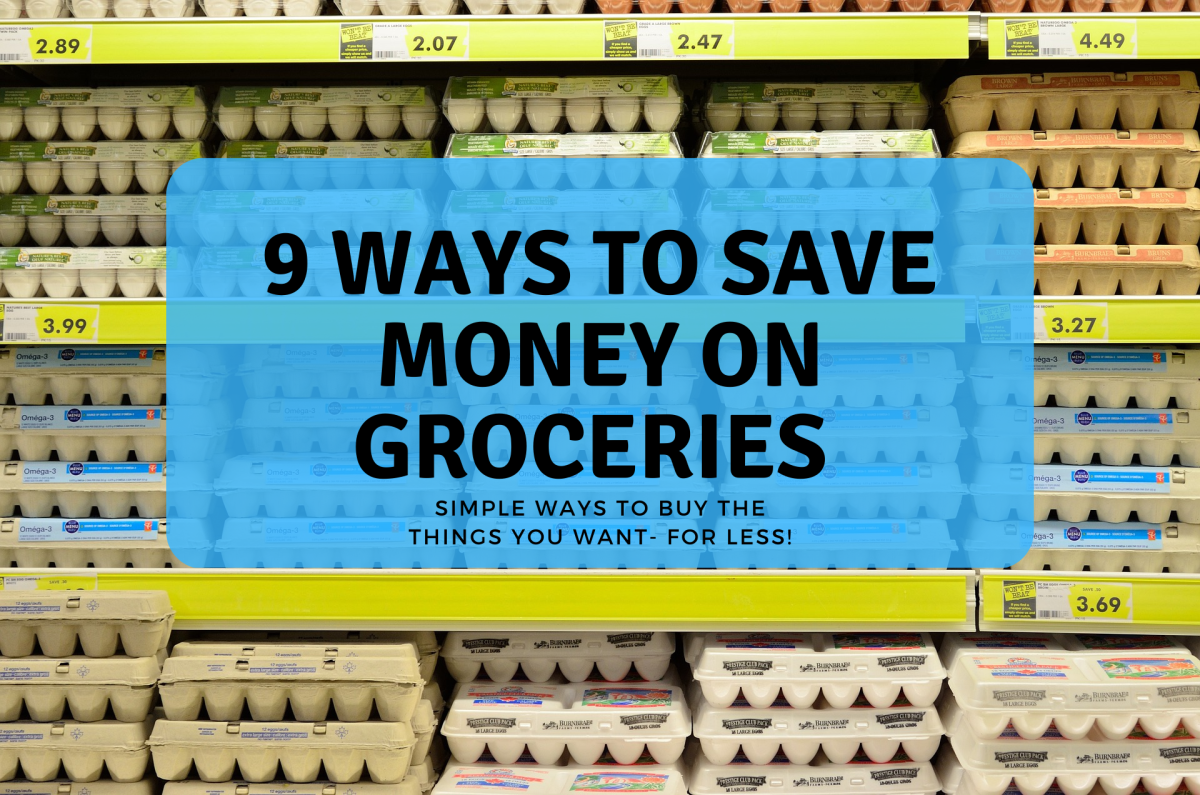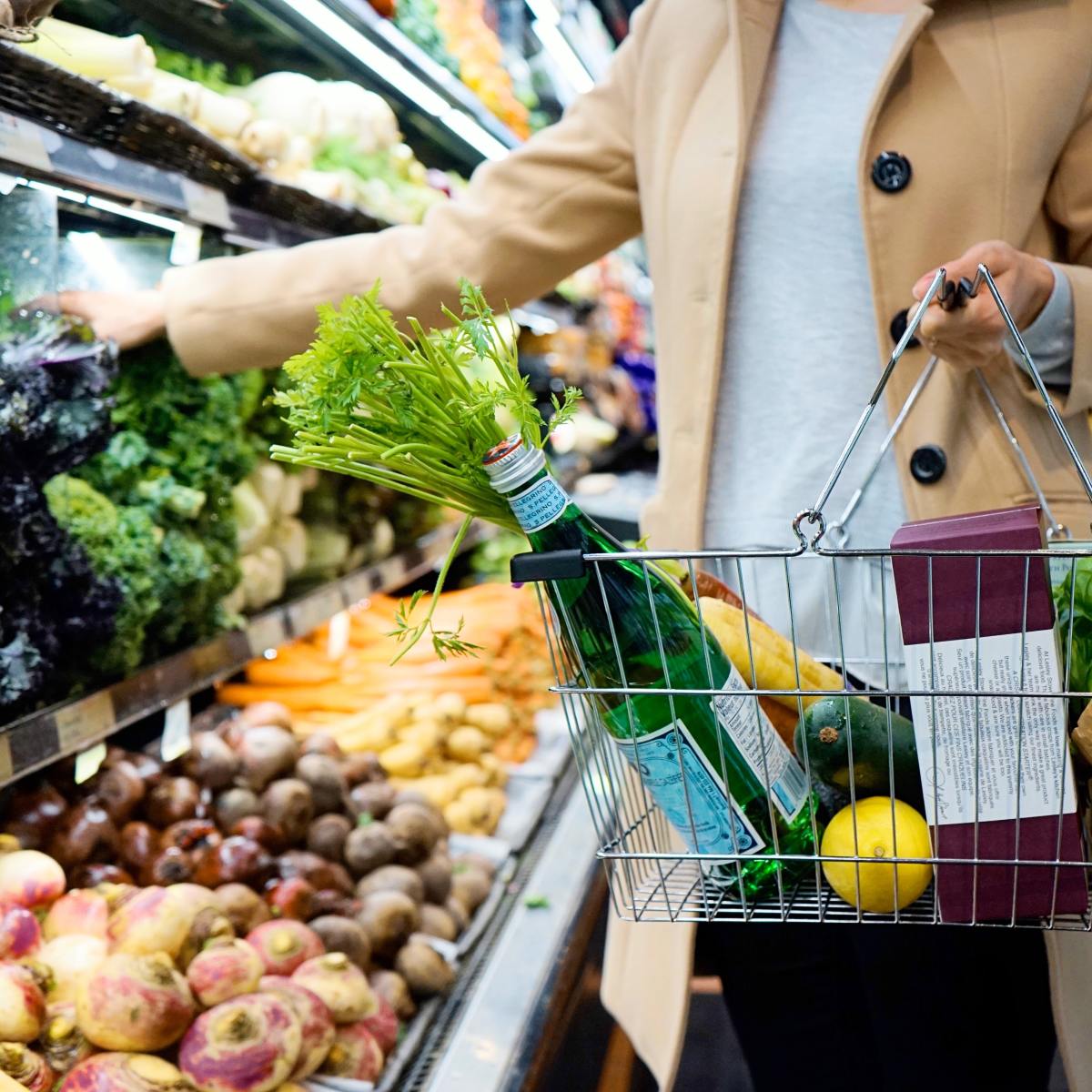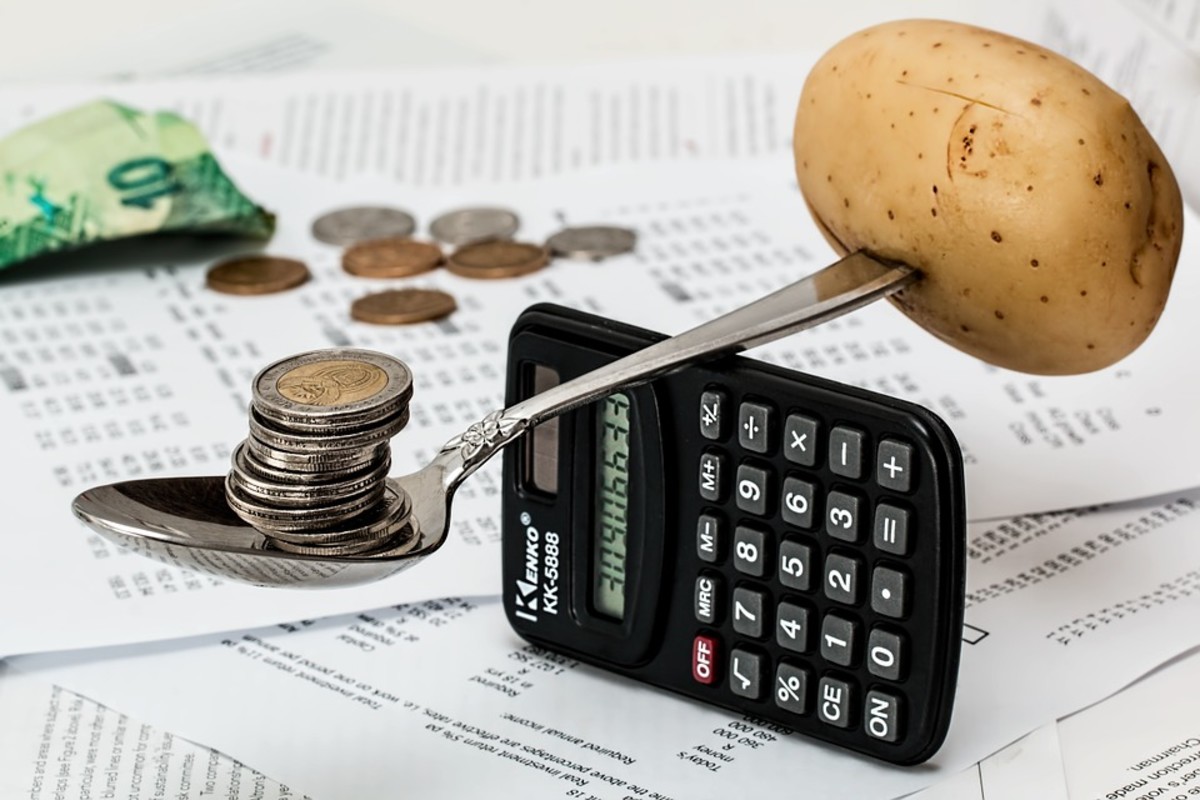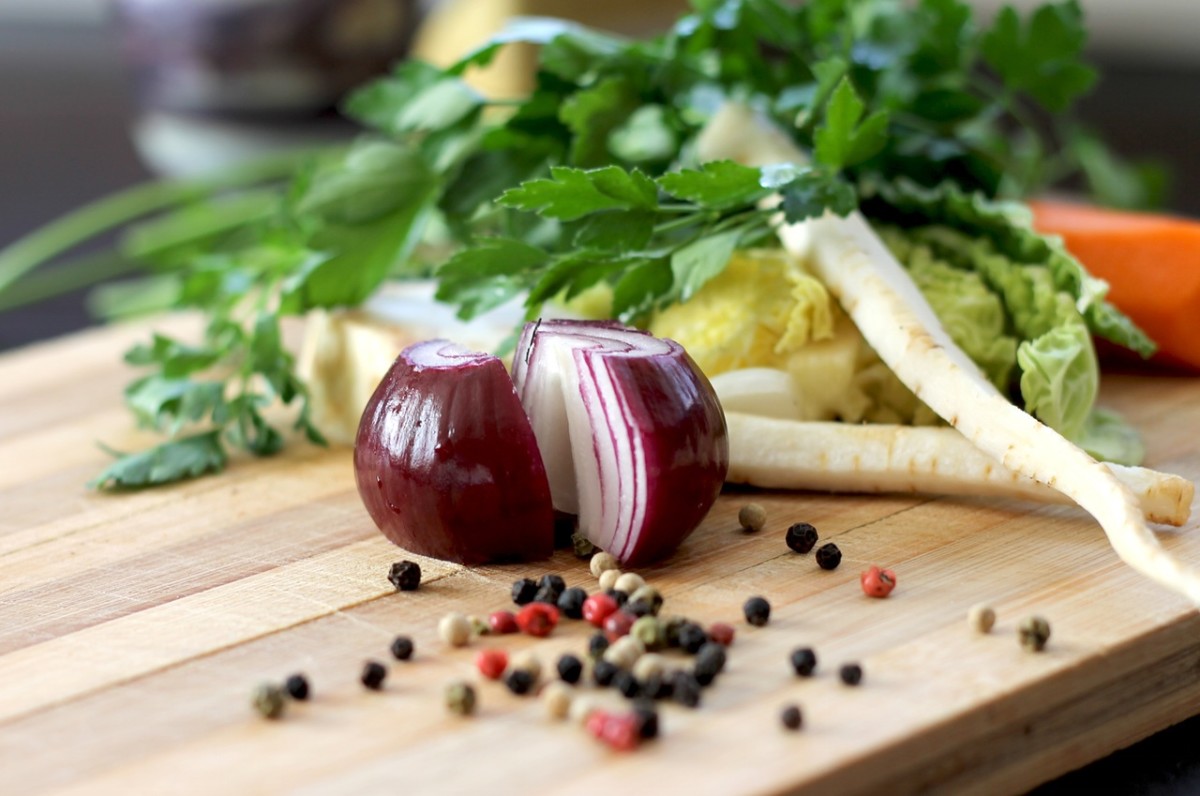- HubPages»
- Personal Finance»
- Frugal Living»
- Household Expenses
How to Reduce Your Grocery Bill Using My 5 Easy Steps
How to Save Money on Your Grocery Bill
Living in a dessert can be expensive! I say this while glancing at our electric bill in the peak of summer. While the cost of living in Arizona is still lower than many places in the united states, I'm always trying to think of ways to reduce cost and save money. There are ways to lower your monthly bills-- specifically ways to lower your grocery bill.
Saving money requires discipline. Without discipline, none of these steps will do anything for you. Oh and one more thing... time.
It's the age-old dilemma of time VS money. Saving money will take a little extra time. Or a lot depending on how much you want to save. Just take an objective look at how you shop and spend money in the grocery store.
My husband and I will spend about 80 dollars or less on groceries for a month. We usually do two forty-dollar trips. These tricks have helped me keep our bi-weekly bill to about 40 dollars or less. As I get a little better at it, I can hopefully keep our grocery bill even lower.
Grocery Budget Tips
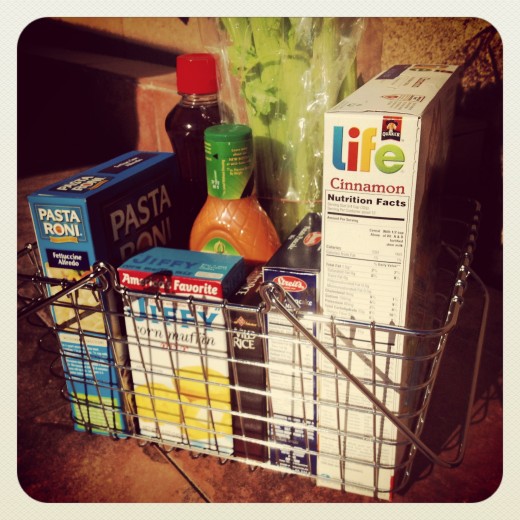
1. Always Make a List
Make your grocery list, check it twice, and STICK TO IT!
This may seem like a "no-brainer" but many shoppers just make purchases to stock up without knowing what they have. Are you planning out meals, even loosely, or just buying what you think you need? Making a list of what you already have is just as important as a shopping list of what you need.
We shop at least twice a month, so I need to make sure we have enough dinner items for 14 days. I do a rough table that shows meal planning, like so. Although, I do it in a little notebook I use for shopping.
I'll call it my "cave-woman" chart because it's crude, basic, and easy to navigate.
My "cave-woman chart"
Meat
| Sides
| Fruits/Veggies
|
|---|---|---|
x
| x
| x
|
x
| x
| |
x
|
"cave-woman" list
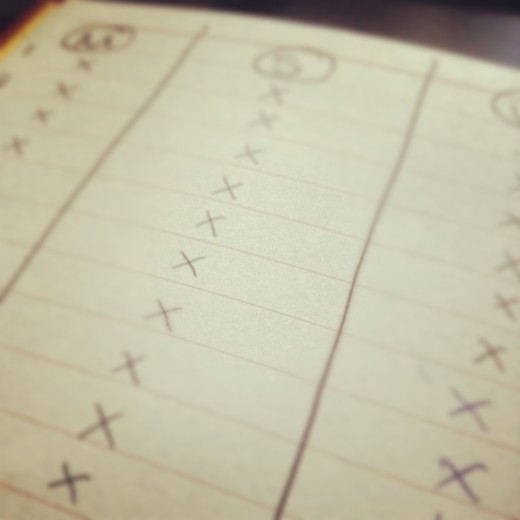
I have three columns, one each for meat, sides, and fruits/veggies respectively. I have fourteen rows, one for each dinner meal. First, I check my freezer, fridge and pantry to see what we have. Each meat item I have that will be part of a dinner meal will result in an 'X'. If it's a large package of chicken for example, that would make at least two meals for my husband and I, and will result in two consecutive 'X's-- one for each day. I then continue to the next columns until I've made a crude inventory of what we have. Each empty box will represent an item that I need to buy. I take my notebook (and table) shopping with me and now I can make sure I buy exactly the right number of dinner meats, sides, and fruits/veggies. This eliminates buying more than I need and keeps me focused. For each item I buy, I make an "X" in the appropriate box and keep shopping.
Depending on how light my shopping trip is, I can sometimes get away with just using my cave-woman chart as a list-- if I don't have specific items with coupons and I'm just buying whatever is on sale. However, if it's a shopping trip with more items, then I use this table as a first step to making a list.
During the week I have gathered any coupons and or fliers that come in the mail. Based on what we need and who has it on sale, we will shop there. For example, if I know I have to buy four side dishes and my grocery store ad says rice-a-roni or pasta-roni are 89 cents a box AND I have a coupon for 75 cents off two boxes, I will be buying four boxes. I know before I even go into the store that I will be hard-pressed to find any other side-dishes that will cost about 70 cents per meal. And that was just with one coupon on two boxes. If I have a second coupon, I will use it of course, but this is just an example. I'll talk a little bit more about coupons later.
With my first list (cavewoman chart) out of the way, I can either
- go shopping or
- if it's a bigger shopping trip with lots of random items, I will then make a more traditional-looking shopping list. All my pretty "X"s do me no good if I need light bulbs and toothpaste.
Staples
| Meal Items
|
|---|---|
bread
| rice-a-roni (4)
|
milk
| frozen carrots
|
cheese
| 5lb bag of potatoes (b1g1f)
|
flour
|
Shopping List
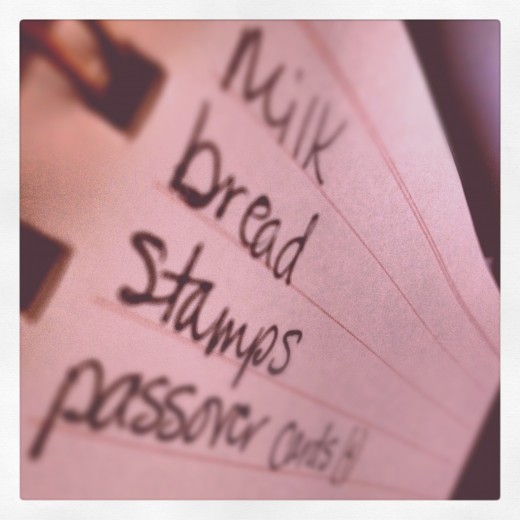
I usually make a two-column list. Column A contains what we absolutely need like bread, eggs, margarine. You know, staple supplies that we have currently depleted. Column two might contain items that we need to fulfill our 14-day menu, that are also on sale that week. It's a great way to write little notes to myself to make sure I take advantage of whatever specials are going on and if I have to buy two of something for a coupon, for example.
This is also a great way to get my husband to help. He hates grocery shopping and is always worried he will pick out "the wrong one." So, I can tear this list right down the columns and have him go get the staples. He is very familiar with what kind of milk or bread to get, and this can cut our trip time in half.
2. Don't shop on an empty stomach
This is straightforward and doesn't need a chart.
Hopefully you already use this method but if not, get to it! Shopping on even a slightly hungry tummy makes everything look delicious and puts you at risk for buying more food and ultimately spending more money. For this reason, we make our grocery trip right after eating lunch or dinner at home.
Remember--
Hungry tummy = more food = more money $$$ = more stuff that might go bad before you get to it = wasted money
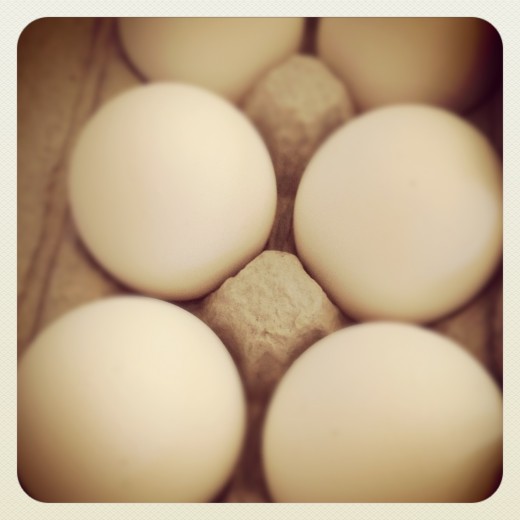
3. Don't Always Rely on Coupons
Coupons are great but I am in no way a coupon lady. I wish! It is possible to cut your grocery bill without coupons.
I will use coupons only if:
- it's for an item that I would spend full price on anyway
- it's for an item that is already on sale that week in the grocery store
- it's truly less expensive than buying an alternative
Having a 50 cent coupon for 1 box of Wheat Thins doesn't mean I'm always going to use it. Our favorite grocery store increases all coupons under $1.00 to $1.00 and anything more than a dollar is face value. SO! That policy would increase the value of my coupon for Wheat Thins but if they aren't on sale and Ritz are on sale and ultimately less than the Wheat Thins after the coupon savings, I'll keep the coupon for next time and get the Ritz.
Weekly sales will heavily dictate what we'll be eating for the next two weeks. This doesn't mean our meals and snacks are boring, though. Especially since the sale items change each week. I'm not always buying the same stuff.
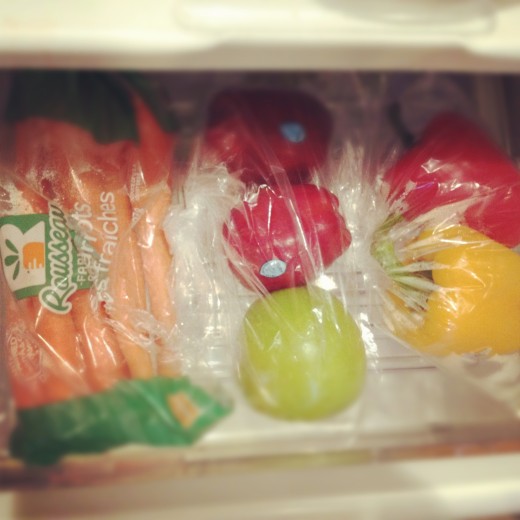
4. Buy Only What You NEED and Don't Waste Food
Shop smart but also EAT SMART! Freeze what you can. My husband and I have a hard time finishing a loaf of bread before it expires. So we freeze half until we're ready for it. Do this with anything you can. I feel absolutely terrible about wasting food and even if you remove your emotions, you're still just wasting money.
In our house, eating smart also means eating whatever might get yucky first. Frozen vegetables last a while, but that doesn't mean we don't buy fresh veggies. When buying fresh fruits or veggies (we love cucumbers, bell peppers, apples), make sure you eat those first. When making dinner, I keep in mind we have fresh items and I will use those each night until they're gone. Then we'll start using frozen items like crinkle cut carrots or edamame. By doing this, I've never had to throw away a fruit or vegetable that went bad.
Don't throw away leftovers. Take them to work the following day for lunch or revamp them for your next dinner. Just because you have leftovers doesn't mean you have to eat it the exact same way until it's gone. Have lots of leftover bread from a gathering? Whip up some french toast the morning after. Have lots of leftover vegetables? Whether they're cooked or raw, they'll go nicely into stews, salads, omelets and quiches. Just be creative. See my chart below for easy ways I reinvent leftovers in my kitchen.
What Can I Make with Leftovers?
Leftover
| Plus
| Becomes
|
|---|---|---|
Potato Latkes
| Eggs, onions, cheese
| Frittata
|
Steak
| Bell pepper, onions, cheese, tortilla
| Fajita
|
Mashed Potatoes
| Chopped bacon, sour cream
| Potato Pancakes
|
Fish
| Tomatoes, cabbage, avocado, tortilla
| Fish Tacos
|
White Rice
| frozen peas and carrots, soy sauce, egg
| Fried Rice
|
Plain Pasta
| Carrot, cucmber, Italian salad dressing
| Italian Pasta Salad
|
Chicken Breasts
| BBQ sauce, ketchup, crockpot
| Pulled BBQ chicken
|
Broccoli
| Bread crumbs, egg, Parmesan Cheese
| Savory Fritters
|
Hamburger/Hot Dog Buns
| Milk, eggs, sugar, cinnamon
| Bread Pudding
|
Turkey
| Rye bread, saurkraut, swiss cheese, thousand island dressing
| Grilled Turkey Reuben
|
Hot Dogs
| Crescent roll dough, American cheese
| Pigs in Blankets
|
Spaghetti Sauce
| English Muffins, cheese, pepperoni
| Baby Pizzas
|
Taco Meat
| Beef broth, corn, tomatoes
| Tortilla Soup
|
To me, syrup is syrup.

...but not all cheese is cheese
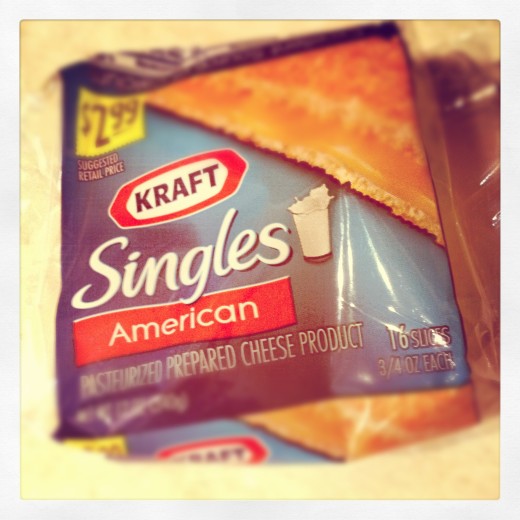
How Many of These Methods do You Already Use?
5. Be reasonable
Be reasonable. Be flexible. Be realistic.
When I say be reasonable, I mean this in two ways.
Example 1
"Be reasonable. Buying generic bleach will do exactly what you need it to do and cost one third the price of the name brand."
Example 2
"Be reasonable. Why buy cereal that you hate just because it's cheaper than a name brand? Spend the extra 2 bucks and be happy."
Now, unless if bleach happens to be your happy item, then buy it. My point is, there are name brands that you can't live without. I know. I have my own (Kraft cheese, Coke/Pepsi, nice toilet paper). But there are items that will substitute too.
So buy the items you have to pay full price for and save money in another aisle. But, experiment once in a while. Try a bargain brand, and if it really SUCKS, then keep your receipt and bring it back. Let the customer service representative know that you bought the item because you "trust their store name and wanted to try it, but it simply isn't comparable and you'd like to put the refund price towards the name brand of the same product and pay the difference." They'll do it.
The key is that you'll find some items that are comparable and little by little, you can test them and perhaps begin to save money.
Heather Says
I'm a rare breed of person that enjoys grocery shopping. Like most people, I enjoy saving money. Keeping my grocery bill low makes the experience even better. Hopefully I have given you a few ideas that you can incorporate into your own grocery routine and save you some money. If all five aren't in your future, at least try steps 1 and 2. I bet you'll notice a difference.

